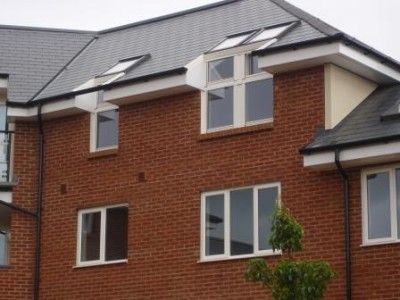 Things are moving apace with roof window design, so much so that the number of opening options, sizes, styles and configurations provides a steady flow of new information. However, not only is there more choice than ever before, the performance variation between manufacturers is also becoming more marked. For the contractor, awareness of factors affecting technical performance in particular can prove hugely beneficial in discussions with a building designer or owner. This applies equally to flat roof projects, of which more later.
Things are moving apace with roof window design, so much so that the number of opening options, sizes, styles and configurations provides a steady flow of new information. However, not only is there more choice than ever before, the performance variation between manufacturers is also becoming more marked. For the contractor, awareness of factors affecting technical performance in particular can prove hugely beneficial in discussions with a building designer or owner. This applies equally to flat roof projects, of which more later.
More than three quarters of all roof windows fitted are still of the basic centre pivot design. What has begun to change this is the way that designers are using their specified products as a feature in their own right. Varied combinations have resulted in a steady increase in the average number being used on each project but such large holes in a roof conflict with tighter Building Regs, the demands of energy efficiency Standards and the influence of environmental assessment methods on commercial projects such as BREEAM. It is this combination of factors and the general requirement to build more sustainably that has increased pressure on manufacturers to improve thermal efficiency.
When referring to thermal efficiency we should point out that we are talking about the roof window itself, without accessories such as thermal insulation and underfelt collars. Why? Well, simply because a building airtightness test will quickly reveal any leakage through a window’s seals and joints, the effectiveness of which depend heavily on the standard of construction. A lengthy development programme by FAKRO has achieved market-leading U-values in products ranging from the quadruple-glazed FAKRO FTT U8 Thermo, to the standard FTP-V centre pivot. In the process, it also led to additional features not available from other manufacturers being introduced as standard in both pine and PVC windows.
U-value performance is also affected by components such as shrink-resistant seals to restrict air paths and warm spacers to prevent cold bridging. This is essential where, for example, a mechanical ventilation and heat recovery (MVHR) system is being fitted. These also require non-vented roof windows which aren’t routinely available from all manufacturers. FAKRO, however, routinely supplies windows without a vent and frequently manufactures to bespoke standards for specific projects.
Low energy homes
In relation to the FTT U8, Tina Holt is an award winning environmentalist specialising in low-energy homes. She explained: “We decided to work to the ‘EnerPHit’ standard for a quality retrofit and loft conversion of our 1952 detached home. This was as part of plans to achieve whole house space heating of less than 40 kWh per square metre per year and we knew that airtightness would be our biggest challenge because of the complex roof structure. EnerPHit specifies use of suitable triple-glazing so we chose the FAKRO FTT U8 as its U-value of 0.58 W/m²K surpasses the minimum requirement of 0.85 W/m²K. In the initial airtightness test of the house following the main phase of work we achieved a figure of 1.1 air changes per hour (ACH) at 50 Pascal’s pressure. Though we had to reach a figure of 1.0 ACH we did not detect any air flow through the Fakro window seals during the test. The FTT U8 therefore looks to be a very suitable product for houses in which MVHR is installed.”
For the millions of flat roofs throughout the country, the standard of thermal efficiency which had for so long lagged behind what could be achieved with pitched roofs, has now very much caught up. Products such as the FAKRO Type F have comparable U-values to their pitched roof counterparts, so much so that its design and performance proved sufficiently impressive for the product to win a coveted Red Dot Design Award. Considered the @Oscars of Design’, it featured, alongside well-known brands such as BMW, Bosch, Apple, LG and Nikon. The option to buy a quadruple-glazed product for a flat roof extension includes scope to use traditional or domed (Type C) windows and rooflights with options for smoke ventilation, means of escape and a gable roof installation. The most recent development has been an anti-slip window for use on roof terraces. Its reinforced sash and frame enable it to be fitted flush within the roofline and take constant foot traffic. All are as easy to fit as the popular centre pivot but now, with scope for external cladding to be in nearly 200 RAL colours, flat roofed interiors can be installed to airtight standards while the exterior also looks good.
